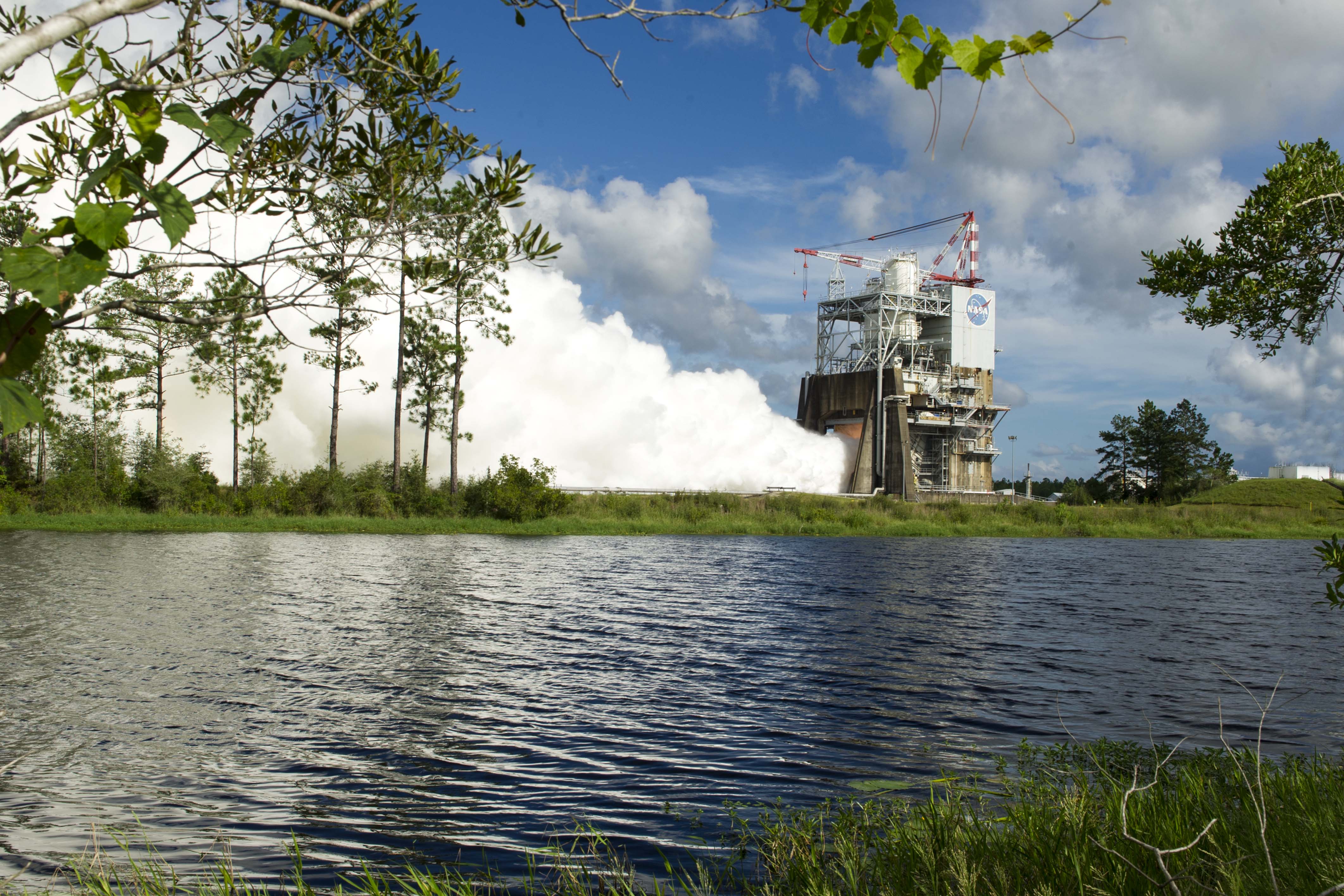NASA Test-Fires Engine for Most Powerful Rocket Ever

NASA engineers blasted an RS-25 rocket engine for 7 minutes yesterday (Aug. 18) at the Stennis Space Center in Mississippi as part of a development test for hardware that will make up the most powerful rocket ever.
Four RS-25 engines, built by Aerojet Rocketdyne, plus two solid rocket boosters, will propel NASA's new Space Launch System (SLS) rocket off of Earth and onward into deep space. The rocket is NASA's chosen vehicle to reach Mars. The new test is shown in full in a new NASA video.
Previously, RS-25 engines were used as the main engines for space shuttle flights, but they will need to fire at higher performance levels for use with the SLS, NASA officials said in a statement. This test collected data on how the engine works at that level, and also tested an engine controller unit that will allow it to communicate with the rest of the SLS setup. [Space Launch System Rocket's First Crew Launch Dramatized By NASA (Video)]

This was the third test in a six-test series; NASA will keep gathering data on the engine's performance in more tests this fall. NASA will also install four engines on the SLS core stage and blast all four at once.
The test capped off two days of media events, where NASA officials showed off their nearby Michoud Assembly Facility in New Orleans and talked about progress toward launching to Mars.
When talking with the media yesterday, space shuttle astronaut Rick Mastracchio mentioned that someone's reaction to hearing he worked at NASA was, "Oh, I thought NASA went out of business!"
"Of course, no, NASA did not go out of business — in fact, I think now is a very exciting time for NASA," Mastracchio said during the NASA TV broadcast. He described the tests being conducted on the space station to prepare technology for long solar system journeys, as well as commercial spaceflight companies' development of new, efficient ways to get to space. And, of course, he brought up the SLS megarocket.
Get the Space.com Newsletter
Breaking space news, the latest updates on rocket launches, skywatching events and more!
"SLS is going to be the most powerful rocket ever built when it's done several years from now," he said. "It's going to have to throw up all this hardware into low Earth orbit so we can then take it to the moon and beyond, all the way to Mars."
Mastracchio discussed how SLS' powerful engines and the Orion spacecraft would open up more of the solar system to astronauts and how it would change the way spaceflight works.
"I've done several shuttle missions … I've lived on [the] space station, and all my missions were in low Earth orbit, where we had close support by the ground folks — when we had to change out a light bulb, we asked the ground's [mission control's] permission," he said. "The time delay was only a few seconds."
That will change for future deep-space missions, he said.
"We're going to have to change the way we do business," Mastracchio said. "When we go beyond low Earth orbit, it's going to be days, weeks, months and even years before we get home. The crew's going to have to be much more independent. We're going to have to have things like additive manufacturing, or 3D printing. We're going to have a lot smarter vehicles, and we'll have a lot smarter crewmembers, too."
Email Sarah Lewin at slewin@space.com or follow her @SarahExplains. Follow us @Spacedotcom, Facebook and Google+. Original article on Space.com.
Join our Space Forums to keep talking space on the latest missions, night sky and more! And if you have a news tip, correction or comment, let us know at: community@space.com.

Sarah Lewin started writing for Space.com in June of 2015 as a Staff Writer and became Associate Editor in 2019 . Her work has been featured by Scientific American, IEEE Spectrum, Quanta Magazine, Wired, The Scientist, Science Friday and WGBH's Inside NOVA. Sarah has an MA from NYU's Science, Health and Environmental Reporting Program and an AB in mathematics from Brown University. When not writing, reading or thinking about space, Sarah enjoys musical theatre and mathematical papercraft. She is currently Assistant News Editor at Scientific American. You can follow her on Twitter @SarahExplains.









